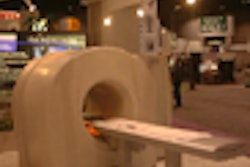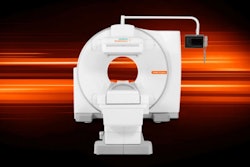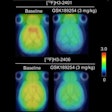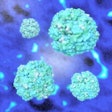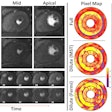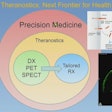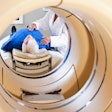Medicare now pays for its use in restaging lung cancer, and nuclear medicine specialists have praised its diagnostic accuracy, but what kind of impact does FDG-PET have on patient management?
Several papers at the Society of Nuclear Medicine conference in St. Louis this month took a look at this issue and came up with positive results. First, Dr. Naresh Gupta from West Virginia University in Morgantown studied the long-term outcome of patients with indeterminate lung nodules whose management was based on fluorine-18 fluorodeoxyglucose PET imaging.
"We all know that FDG-PET is accurate for differentiating between benign and malignant nodules," Gupta said. "But what may not have been as clearly defined is, What is the effect of this particular modality on patient management and prognosis?"
In this prospective study, 77 patients who had presented with indeterminate lung nodules, ranging in size from 8 mm to 4 cm, underwent FDG-PET and were followed over a two-year period. Of those, 31 patients had malignant nodules. The true-positive rate for FDG-PET was 97%, Gupta said.
In terms of managing these malignant cases, the FDG-PET scan led to early curative resection in 26% of cases and palliative treatment in 13%. At the two-year follow-up, there was no cancer recurrence in 95% of these patients.
Of the 46 patients with a negative FDG-PET scan, 34 showed no change in nodule size over two years. One patient's PET exam a year later was positive for cancer, Gupta said.
Overall, FDG-PET led to a change in management in 59% of patients with lung nodules and prevented unnecessary intervention or thoracotomy in 44% of the patients. As a result, imaging with FDG-PET could potentially save $1.32 million a year, Gupta concluded.
But theoretical savings are of little value if referring doctors aren't requesting FDG-PET exams when it comes to restaging lung cancer. Researchers from the University of California, Los Angeles investigated whether the modality had gained acceptance in community hospital settings for lung cancer treatment.
Researchers retrospectively examined the records of 520 patients referred to UCLA for assessment between 1997 and 1999. Of that number, 173, or 33%, had been treated for lung cancer, said presenter Dr. Cecelia Yap.
Disease stage was based on written reports from CT scans as well as whole-body FDG-PET in order to mimic the common clinical scenario of most referring physicians. CT and PET findings were concordant in 61% of the cases, Yap said.
When compared to clinical staging by CT, the FDG-PET downstaged the cancer from non-resectable to resectable in 30% of the patients. Upstaging, or a shift from resectable to non-resectable, occurred in 23% of the cases, Yap reported.
By surgical classification, 18% of the patients were re-staged to non-resectable, while 26% were recategorized as resectable. Based on verification with biopsy, FDG-PET offered the correct tumor classification in 87% of cases, compared to 64% with CT.
In one case, the FDG-PET exam found a lesion in the femur that was not seen on the CT scan, correctly upstaging the patient to a non-resectable status, she said.
The UCLA group also looked at FDG-PET's usefulness for staging pre-operative lung cancer. In the group of 520 patients, 197, or 37.8%, had newly diagnosed lung cancer, said Dr. Christiaan Schiepers.
Compared to CT results, the FDG-PET scans downstaged 26% of those patients and upstaged 28%. FDG-PET changed the clinical tumor stage in 54% of the cases, Schiepers said.
FDG-PET also found unsuspected contralateral lung and distant disease involvement in 39% of the patients. In the 64 cases where it was possible to verify tumor stage with histology, FDG-PET offered a correct diagnosis in 69% of patients, compared to 56% with CT. FDG-PET imaging affected clinical staging in one out of every five patients, Schiepers concluded.
The next step for this study will be to look at these same patients in a five-year follow-up, Yap said.
By Shalmali Pal
AuntMinnie.com staff writer
June 20, 2000
Let AuntMinnie.com know what you think about this story.
Copyright © 2000 AuntMinnie.com






